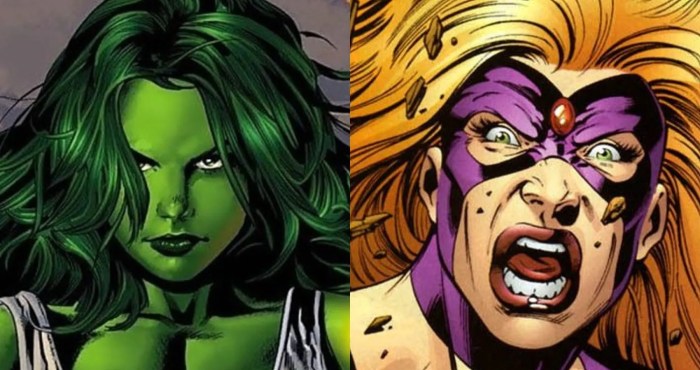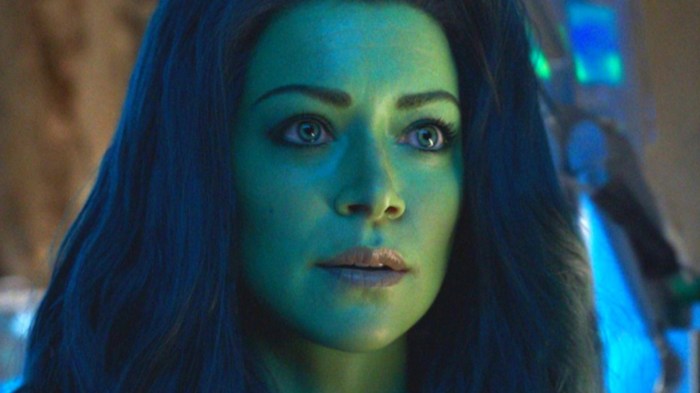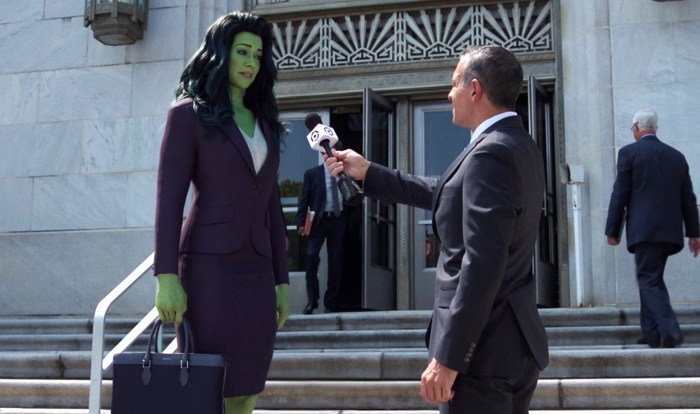Marvel’s “She-Hulk: Attorney at Law” presents a unique blend of legal drama and superhero action, punctuated by a compelling cast of villains. This exploration delves into the motivations, power dynamics, and overall impact of these antagonists, examining how they shape She-Hulk’s journey and the narrative’s overarching themes. We will analyze their backstories, visual representations, and their crucial roles in challenging Jennifer Walters both professionally and personally.
From the main antagonists who directly clash with She-Hulk to the recurring characters who subtly influence her life, we will uncover the intricate web of conflict and consequence that defines the series. This analysis will dissect the villains’ strengths and weaknesses, their methods, and ultimately, their lasting effects on the narrative and She-Hulk’s development as a hero and lawyer.
Main Villains

She-Hulk: Attorney at Law features a compelling array of antagonists, each posing unique challenges to Jennifer Walters both professionally and personally. Their power dynamics and motivations reveal complex layers within the narrative, showcasing a range of villainous archetypes and approaches to conflict.
Power Dynamics and Motivations of Main Villains
The power dynamics between She-Hulk and her adversaries are multifaceted, often shifting throughout the series. While She-Hulk possesses immense strength and agility, her villains frequently leverage other strengths, such as intellect, legal maneuvering, or control over resources, to challenge her. Their motivations are similarly diverse, stemming from personal grievances, ideological differences, or a thirst for power. This creates compelling conflicts that explore the complexities of justice and morality.
Analysis of Villainous Methods and Approaches
The villains in She-Hulk employ vastly different strategies to achieve their goals. Some, like Titania, rely on brute force and public manipulation, aiming for direct confrontation and exploiting social media to enhance their image. Others, such as the Intelligencia, operate through covert means, employing technology, misinformation, and manipulation of legal systems to undermine She-Hulk and her clients. This contrast in methods underscores the varied ways power can be wielded and challenges met within the legal and superhero spheres.
Comparison of Villain Strengths, Weaknesses, and Fates
| Villain | Strengths | Weaknesses | Ultimate Fate |
|---|---|---|---|
| Titania | Superhuman strength, enhanced durability, skilled manipulator of public opinion | Prone to impulsive actions, lacks strategic depth, easily provoked | Defeated in multiple confrontations, ultimately remains a recurring nuisance. Her legal battles with She-Hulk continue. |
| The Intelligencia | Collective intelligence, technological prowess, access to resources and information, legal expertise | Lack of cohesive leadership, internal conflicts, overreliance on technology and underestimation of She-Hulk’s resilience | Their schemes are repeatedly thwarted by She-Hulk, leading to their temporary disbandment, though their individual members likely continue their activities. |
| Hulk (various versions) | Depending on the version, immense physical strength, destructive capabilities, regenerative abilities | Emotional volatility (in some versions), susceptibility to manipulation, moral ambiguity (in some versions) | Their involvement varies across episodes and seasons, with outcomes determined by the specific conflict and version of the Hulk depicted. |
Recurring Antagonists

While She-Hulk: Attorney at Law features a main antagonist in each arc, the series also utilizes recurring antagonists who contribute significantly to the show’s overall narrative and thematic development. These characters, through their actions and interactions with Jennifer Walters, explore themes of workplace sexism, the pressures of fame, and the complexities of navigating a superhero identity in a legal and social context. Their repeated appearances allow for a deeper exploration of these themes and a more nuanced portrayal of Jennifer’s journey.
The recurring antagonists are not simply obstacles for She-Hulk to overcome; they serve as foils, highlighting different aspects of her character and the challenges she faces. Their actions often force Jennifer to confront her own vulnerabilities and biases, pushing her to grow and evolve as both a lawyer and a superhero. This recurring conflict creates a compelling narrative arc that extends beyond individual episodes, enriching the overall viewing experience.
Recurring Antagonists and Their Roles
The recurring antagonists in She-Hulk: Attorney at Law play distinct, yet interconnected, roles in shaping the narrative. They aren’t simply villains in the traditional sense; instead, they represent various societal pressures and internal conflicts that Jennifer must grapple with. Their actions often mirror or challenge Jennifer’s own choices and beliefs, forcing her to re-evaluate her approach to both her legal practice and her superhero life. Their persistent presence deepens the complexity of the show’s themes.
Impact on She-Hulk’s Personal and Professional Life
The recurring antagonists significantly impact both She-Hulk’s personal and professional life. Professionally, they challenge her legal expertise and ethical considerations, forcing her to navigate complex cases with added layers of personal conflict. Personally, these antagonists often serve as catalysts for self-reflection, pushing Jennifer to confront her insecurities and redefine her understanding of herself and her place in the world. The constant pressure from these antagonists shapes her character arc, revealing her resilience and growth throughout the series.
List of Recurring Antagonists and Their Relationship to She-Hulk
The following list details the recurring antagonists and their specific relationships to She-Hulk: Note that the exact classification of “recurring antagonist” may vary based on interpretation, but these characters have a significant and repeated impact on her life.
- Titania: A rival superhero and frequent adversary, Titania embodies the competitive and often cutthroat nature of the superhero world. Her repeated clashes with She-Hulk explore themes of jealousy, professional rivalry, and the struggle for recognition within a male-dominated industry.
- The Wrecking Crew: This team of supervillains represents the constant threat and challenge faced by She-Hulk in her superhero life. Their repeated appearances highlight the ongoing need for vigilance and the ever-present danger inherent in her dual existence.
- Various Clients and Opposing Counsel: While not always antagonists in the traditional sense, these recurring characters often present ethical dilemmas and professional challenges for She-Hulk, forcing her to confront difficult legal and moral questions.
Conclusive Thoughts

The villains of “She-Hulk: Attorney at Law” are far more than mere obstacles; they are catalysts for growth, mirrors reflecting She-Hulk’s own complexities, and crucial components in the show’s compelling narrative. Their diverse motivations, visually striking designs, and multifaceted roles enrich the series, forcing She-Hulk to confront not only physical threats but also the ethical and emotional challenges of her dual life. Ultimately, the success of “She-Hulk: Attorney at Law” lies not only in its protagonist but also in the compelling antagonists who push her – and the audience – to the limits.
FAQ Resource
What makes the villains in She-Hulk unique compared to other Marvel villains?
She-Hulk’s villains often reflect the complexities of the legal system and societal expectations, blending personal vendettas with larger systemic issues, offering a unique contrast to more traditional superhero antagonists.
Are there any villains who return in later episodes or seasons (if any)?
While details about future seasons are scarce, the potential for recurring villains and their evolving relationships with She-Hulk certainly exists, given the open-ended nature of some storylines.
How do the villains’ powers compare to She-Hulk’s?
The power dynamics vary greatly depending on the villain. Some pose physical threats, while others utilize legal loopholes or manipulate situations to their advantage, forcing She-Hulk to adapt her strategies beyond simple brute strength.